Plastic injection molding
What is plastic injection molding?
Plastic injection molding is a manufacturing process in which molten plastic is injected into a mold at high pressure and cooled to form a specific shape. It is used to produce a wide variety of parts and products, from small components like bottle caps and toothbrushes to large components like car bumpers and refrigerator liners.
In the early 1900s, the first thermo plastic injection molding machines were developed. These machines used a screw-type plunger to inject plastic into a heated cylinder, where it was then forced into a mold cavity. This process allowed for the mass production of plastic parts.
In the 1950s, the first all-electric injection molding machines were developed. These machines used electric motors to drive the injection process, eliminating the need for a hydraulic system. This allowed for faster production speeds and more precise control of the injection process.
In the 1970s, the first microprocessor-controlled injection molding machines were developed. These machines allowed for more precise control of the injection process, as well as the ability to store and recall injection parameters.
Today, injection molding is one of the most widely used manufacturing processes in the world. It is used to produce a wide variety of plastic parts, from small components to large automotive parts. Injection molding is a cost-effective way to produce high-quality parts in large quantities.
Plastic injection molding is a process of manufacturing products that involves injecting molten plastic into a mold in order to produce a product with a specific shape and size. This process is frequently used in the production of products such as plastic bottles, toys, and automotive parts. It is a versatile process that can be used to produce both simple and complex items.
The injection molding process begins with the selection of the type of plastic to be used. The most commonly used plastics are polyethylene, polypropylene, polyvinyl chloride (PVC), acrylonitrile-butadiene-styrene (ABS), and polycarbonate (PC). Each type of plastic has its own properties, so it is important to select the correct material for the intended product.
Once the plastic has been selected, it is heated to its melting point and injected into a mold. The mold is usually made from metal, typically steel or aluminum, and is usually designed according to the product that is being manufactured. After the plastic has been injected into the mold, it is allowed to cool and harden, creating the desired shape.
The injection molding process is a very efficient way to produce large quantities of products quickly and accurately. It is also relatively cost-effective since the molds can be reused to produce multiple products. Additionally, the process is highly automated, allowing for consistent product quality and a high degree of repeatability.
In addition to its efficiency, plastic injection molding is also known for its durability and low cost. The products produced through this process are resistant to corrosion and wear, and they are often more cost-effective than products produced through other manufacturing processes.
Although plastic injection molding is a highly efficient and cost-effective process, there are some drawbacks. Injection molding can be time-consuming, as it requires the molten plastic to be heated and injected into the mold. Additionally, the process can be dangerous due to the high temperatures involved and the potential for molten plastic to splatter. It is important to take the necessary safety precautions when performing any injection molding process
Overall, plastic injection molding is a highly efficient and cost-effective process for producing products. It is used in a wide variety of industries, from automotive to medical and consumer goods. The process is relatively simple and can produce high-quality products quickly and economically.
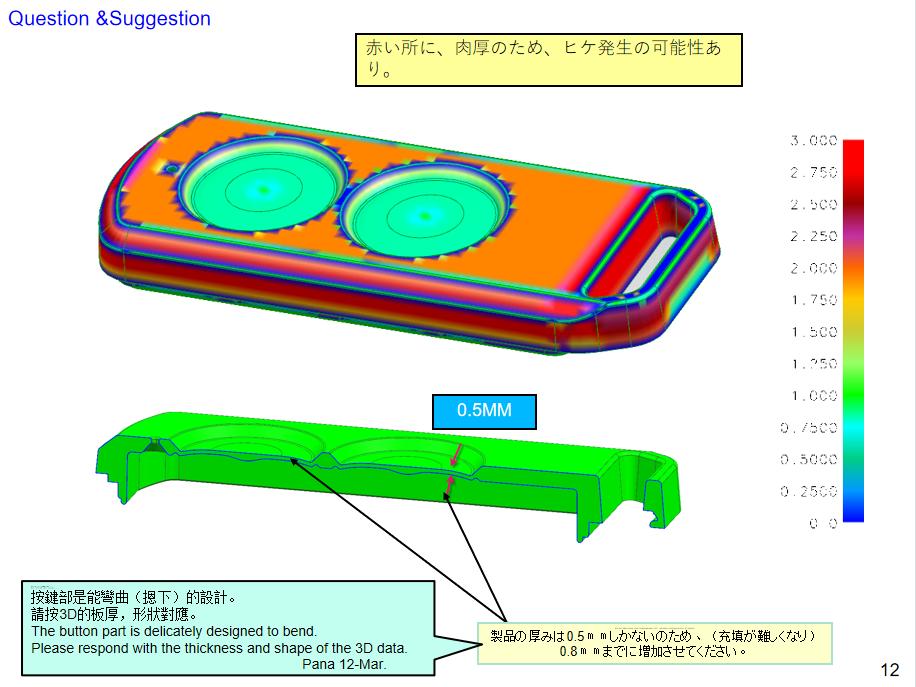
The development trend of plastic injection molding industry
1. Automation: Automation is becoming increasingly important in the plastic injection molding industry. Automation can help reduce labor costs, improve production efficiency, and reduce the risk of human error.
2. Energy Efficiency: The plastic injection molding industry is becoming increasingly focused on energy efficiency. Companies are investing in more efficient machines and processes to reduce energy consumption and costs.
3. Advanced Materials: Advanced materials are becoming increasingly important in the plastic mold manufacturer. Companies are investing in new materials that are stronger, lighter, and more durable than traditional materials.
4. 3D Printing: 3D printing is becoming increasingly popular in the plastic injection molding industry. 3D printing can help reduce costs and lead times, and can be used to create complex shapes and designs.
5. Digitalization: Digitalization is becoming increasingly important in the plastic injection molding industry. Companies are investing in digital technologies such as computer-aided design (CAD) and computer-aided manufacturing (CAM) to improve efficiency and reduce costs.
What are the classifications of plastic injection molding?
1. Thermoplastic Injection Molding
2. Thermoset Injection Molding
3. Liquid Silicone Rubber Injection Molding
4. Micro Injection Molding
5. Insert Molding
6. Overmolding
7. Multi-Shot Molding
8. Compression Molding
9. Powder Injection Molding
10. Reaction Injection Molding
The first patent for plastic injection molding was issued in 1872, but the technology was not widely used until the 1940s.

What raw material are suitable for making plastic injection molding?
Molding is a process used to shape or form a material into a desired shape or form. It is commonly used in the manufacturing of plastic, metal, and ceramic products. Molding can be done through a variety of methods, including injection molding, compression molding, and blow molding. Injection molding is the most common method used in the production of plastic parts, as it is a fast and cost-effective way to produce large quantities of parts. Compression molding is used to form rubber and other elastomeric materials, while blow molding is used to form hollow plastic parts.
How to choose the best quality plastic injection molding manufacturer?
A manufacturer is a company or individual that produces goods or components for use or sale using labor and machines, tools, chemical and biological processing, or formulation. The term manufacturer is also used to refer to the company that owns the brand or trademark of a product.
How plastic injection molding improve the quality of production?
Production is the process of creating goods and services. It involves the transformation of raw materials into finished products through the use of tools, machines, and labor. Production is the backbone of any economy and is essential for economic growth. It is the process of turning inputs into outputs, which can be either goods or services.
Which companies are more worthy of cooperation in purchasing plastic injection molding in China?
If you are looking to purchase plastic injection molding in China, there are a few things you should consider. First, you should research the different types of plastic injection molding available in China and decide which type is best suited for your needs. You should also research the different suppliers in China and compare their prices, quality, and delivery times. Additionally, you should consider the cost of shipping the molding from China to your location. Finally, you should ensure that the supplier you choose is reliable and trustworthy.
What is plastic injection molding manufacturers?
Plastic injection molding is a manufacturing process for producing parts by injecting molten material into a mold. It is most commonly used in mass-production processes where the same part is being created thousands or even millions of times in succession. Plastic injection molding manufacturers are companies that specialize in this process, providing services such as design, tooling, and production of the molded parts.
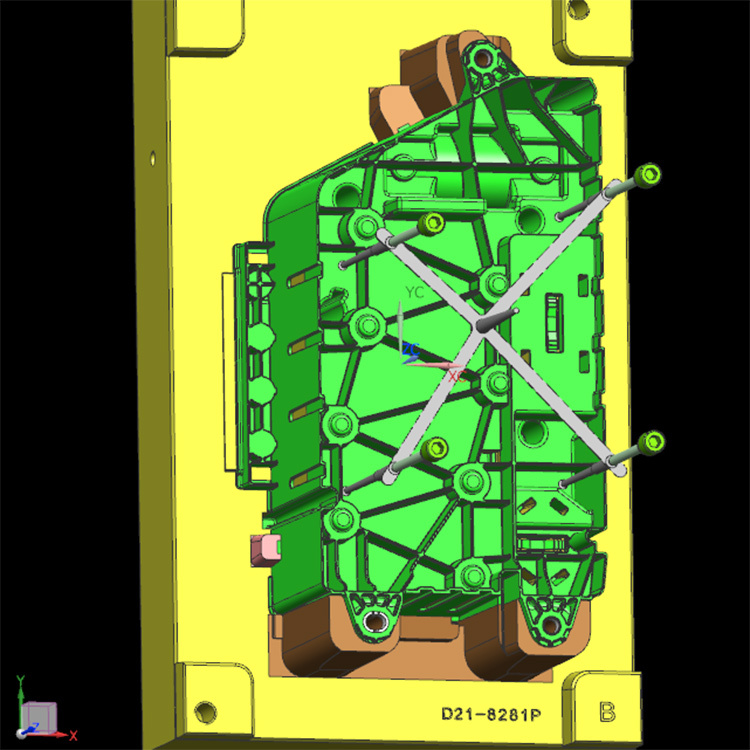
What are the specific requirements for opening a plastic injection molding manufacturer?
There are many injection molding manufacturers around the world. Some of the most well-known include: Arburg, Engel, Husky, Nissei, Sumitomo, Toshiba, Toyo, and Milacron. Analysis on the layout of plastic injection molding factories in China's industrial chain
China's industrial chain is composed of a wide range of industries, including agriculture, manufacturing, services, and technology. The agricultural sector is the foundation of the Chinese economy, providing food and raw materials for the manufacturing sector. The manufacturing sector is the largest contributor to China's GDP, producing a wide range of goods from electronics to textiles. The services sector is the fastest growing sector in China, providing a wide range of services from finance to tourism. Finally, the technology sector is the most dynamic sector in China, driving innovation and growth in the economy.
Plastic injection molding Production equipment
The equipment used in plastic injection molding production includes injection molding machines, molds, auxiliary equipment, and raw materials.
1. Injection molding machine: It is the main molding equipment for thermoplastic or thermosetting plastics using plastic molding dies to make plastic products of various shapes.
2. Mold: It is the mold used for plastic injection molding. It is composed of a cavity and a core. The cavity is the space for forming the plastic parts, and the core is the core of the plastic parts.
3. Auxiliary equipment: It is ancillary equipment for injection molding, including hopper dryer, plastic crusher, color mixer, chiller, etc.
4. Raw materials: It is the material used for injection molding, including plastic granules, plastic powder, etc.
Plastic injection molding Production scale and capacity
The production scale and capacity of plastic injection molding depend on the size of the injection molding machine, the complexity of the part being molded, and the cycle time of the molding process. Generally, the larger the injection molding machine, the higher the production scale and capacity. Additionally, the more complex the part being molded, the longer the cycle time, which can reduce the production scale and capacity.
plastic injection molding Advantages and development direction
Advantages:
1. Plastic injection molding is a highly automated process that can produce high-precision parts with repeatable accuracy.
2. It is a cost-effective process that can produce large quantities of parts in a short amount of time.
3. The process is versatile and can be used to produce parts of various sizes, shapes, and materials.
4. The process is relatively simple and requires minimal setup time.
5. The process is highly repeatable and can produce parts with consistent quality.
Development Direction:
1. Automation: Automation of the injection molding process is becoming increasingly important as manufacturers strive to reduce costs and improve efficiency. Automation can reduce labor costs, improve part quality, and reduce cycle times.
2. Materials: The development of new materials and the use of recycled materials are becoming increasingly important in the injection molding industry. New materials can provide improved performance and cost savings.
3. Process Control: Process control is becoming increasingly important as manufacturers strive to reduce scrap and improve part quality. Process control systems can monitor and control the injection molding process to ensure consistent part quality.
4. Design: Design for injection molding is becoming increasingly important as manufacturers strive to reduce costs and improve part quality. Design for injection molding can reduce cycle times, reduce scrap, and improve part quality.
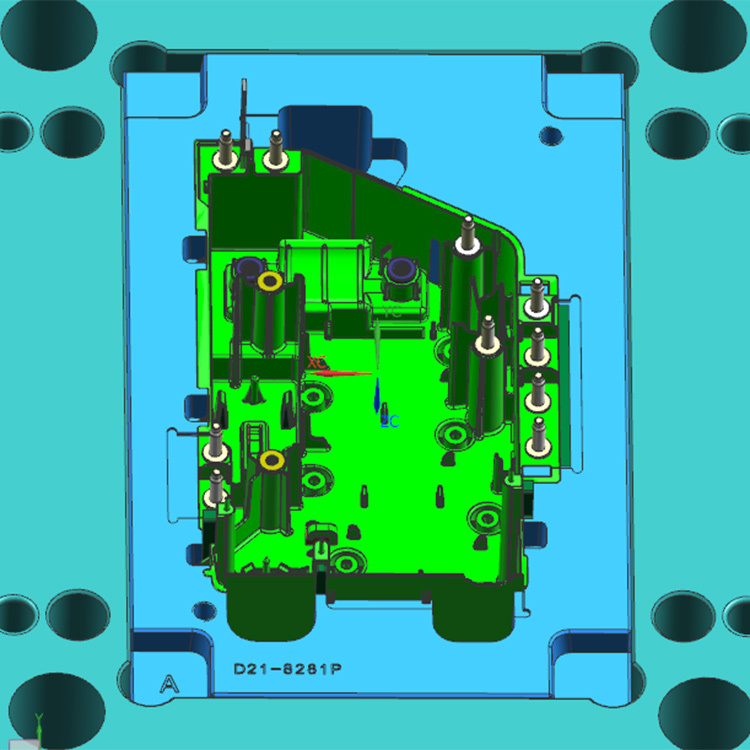
Plastic injection molding R&D capabilities at the global level analysis
Plastic injection molding is a process used to manufacture parts from thermoplastic and thermosetting plastic materials. It is one of the most commonly used manufacturing processes in the world.
The global plastic injection molding industry is highly competitive and is characterized by a large number of players. The major players in the industry are located in the United States, Europe, Japan, and China.
In terms of R&D capabilities, the global plastic injection molding industry is highly advanced. The major players in the industry have invested heavily in R&D to develop new technologies and processes that can improve the efficiency and quality of their products.
In the United States, the major players in the industry include General Electric, Dow Chemical, and 3M. These companies have invested heavily in R&D to develop new technologies and processes that can improve the efficiency and quality of their products.
In Europe, the major players in the industry include BASF, DSM, and Borealis. These companies have invested heavily in R&D to develop new technologies and processes that can improve the efficiency and quality of their products.
In Japan, the major players in the industry include Sumitomo Chemical, Mitsubishi Chemical, and Nippon Steel. These companies have invested heavily in R&D to develop new technologies and processes that can improve the efficiency and quality of their products.
In China, the major players in the industry include Sinopec, China National Petroleum Corporation, and China Petrochemical Corporation. These companies have invested heavily in R&D to develop new technologies and processes that can improve the efficiency and quality of their products.
Overall, the global plastic injection molding industry is highly advanced and has invested heavily in R&D to develop new technologies and processes that can improve the efficiency and quality of their products.
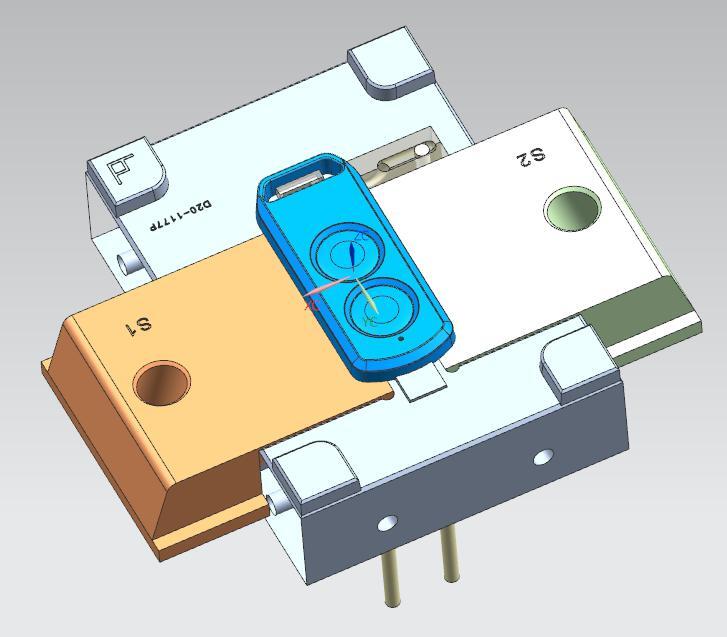
Plastic injection molding Cooperation Notes
1. Cooperation Agreement: The parties agree to cooperate in the field of plastic injection molding.
2. Scope of Cooperation: The parties agree to cooperate in the design, manufacture, and sale of plastic injection molding products.
3. Responsibilities: The parties agree to share the responsibilities of the project, including design, manufacturing, and sales.
4. Quality Control: The parties agree to adhere to the highest standards of quality control in the production of plastic injection molding products.
5. Intellectual Property: The parties agree to respect each other’s intellectual property rights and not to use any of the other party’s intellectual property without prior written consent.
6. Confidentiality: The parties agree to keep all information related to the project confidential and not to disclose it to any third party without prior written consent.
7. Termination: The parties agree that either party may terminate the agreement at any time with written notice.
8. Dispute Resolution: The parties agree to attempt to resolve any disputes arising out of or related to this agreement through good faith negotiations. If the parties are unable to resolve the dispute, they agree to submit the dispute to binding arbitration.
9. Governing Law: This agreement shall be governed by and construed in accordance with the laws of the State of.
10. Signatures: The parties agree to the terms of this agreement by signing below.
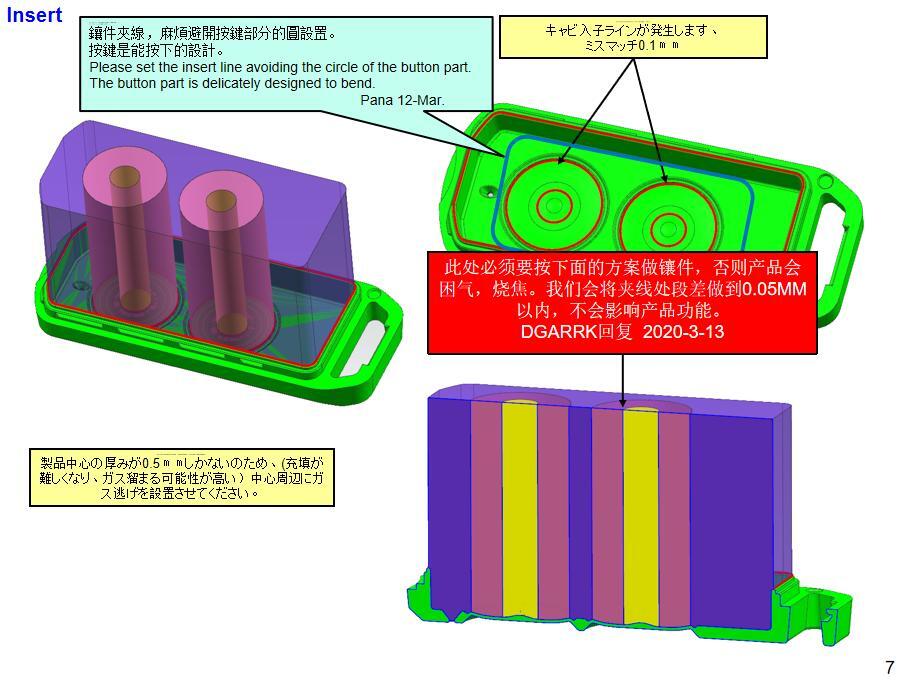
Plastic injection molding Production Technology Coverage
1. Injection molding process
Injection molding is a kind of plastic forming process, which is widely used in the production of plastic products. It is a process of melting plastic raw materials into liquid state, injecting them into the cavity of the mold, cooling and solidifying them, and then taking out the plastic parts.
2. Injection molding machine
Injection molding machine is the main equipment for injection molding process. It is composed of injection system, clamping system, hydraulic system, electrical system and other parts.
3. Injection mold
Injection mold is the main tool for injection molding process. It is composed of mold base, mold core, mold cavity, mold parting surface, mold guide pin, mold guide sleeve, mold ejector pin, mold ejector sleeve, mold cooling system, mold heating system and other parts.
4. Injection molding materials
Injection molding materials are the main raw materials for injection molding process. They include thermoplastic materials, thermosetting materials, elastomers and other materials.
5. Injection molding process parameters
Injection molding process parameters include injection pressure, injection speed, injection time, mold temperature, mold clamping force, etc.
6. Injection molding process control
Injection molding process control includes process monitoring, process optimization, process troubleshooting, etc.
Detailed explanation of the production process of the plastic injection molding
Plastic injection molding is a manufacturing process for producing parts from thermoplastic and thermosetting plastic materials. The process involves melting the plastic material, injecting it into a mold, and then cooling and solidifying it. The process is used to produce parts with complex shapes and sizes.
1. Design: The first step in the plastic injection molding process is to design the part that needs to be produced. This includes the size, shape, and any other features that need to be included.
2. Mold Creation: Once the design is finalized, a mold is created. This mold is typically made from metal and is designed to hold the plastic material in place while it is being injected.
3. Material Selection: The next step is to select the type of plastic material that will be used. This material must be compatible with the mold and must be able to withstand the temperatures and pressures of the injection process.
4. Melting: The plastic material is then melted in an injection molding machine. This machine uses a screw to force the melted plastic material into the mold.
5. Injection: The melted plastic material is then injected into the mold. This process is done under high pressure and at a specific temperature.
6. Cooling: After the plastic material is injected into the mold, it is allowed to cool and solidify. This process can take anywhere from a few seconds to several minutes, depending on the size and complexity of the part.
7. Removal: Once the part has cooled and solidified, it is removed from the mold.
8. Finishing: The part may then be finished with additional processes such as painting, plating, or other treatments.
Plastic injection molding is a versatile and cost-effective manufacturing process that can be used to produce a wide variety of parts. It is important to understand the process in order to ensure that the parts produced meet the desired specifications.
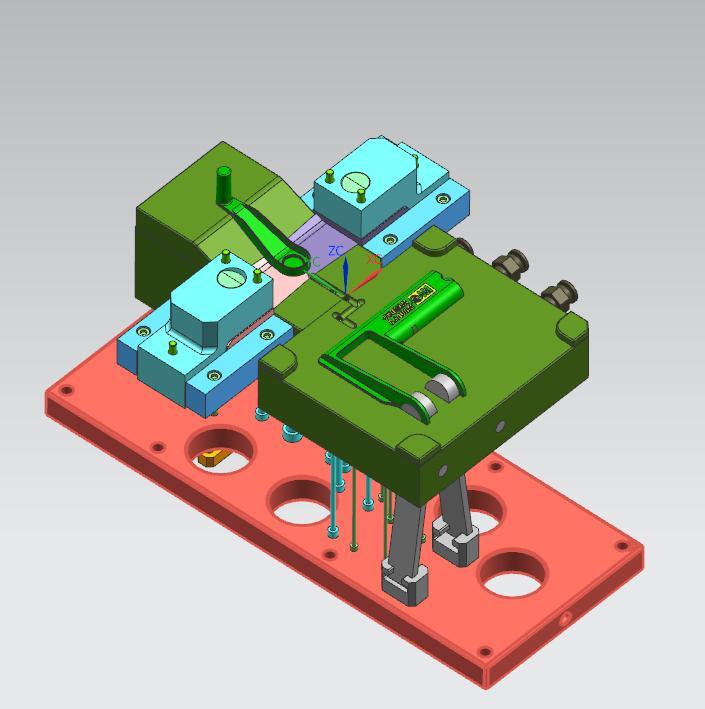
Plastic injection molding production line
plastic injection molding production profit
The profit from plastic injection molding production depends on the cost of the materials used, the cost of labor, and the cost of overhead. Generally, the profit margin for plastic injection molding production is between 10-20%.
Plastic injection molding Production Process Coverage content
1. Molding process:
The plastic injection molding process is a manufacturing process for producing parts from both thermoplastic and thermosetting plastic materials. The plastic is melted in the injection molding machine and then injected into the mold, where it cools and solidifies into the final part.
2. Mold design:
The mold design is the first step in the plastic injection molding process. The design of the mold determines the shape and size of the part that can be produced. The mold must also be designed to ensure that the part can be removed from the mold without damaging it.
3. Material selection:
The material selection is an important step in the plastic injection molding process. Different materials have different properties that must be taken into consideration when selecting the material for the part. The material must be able to withstand the temperatures and pressures of the injection molding process and must also be able to meet the requirements of the part.
4. Injection molding machine setup:
The injection molding machine setup is the next step in the plastic injection molding process. The injection molding machine must be set up to ensure that the part is produced with the correct dimensions and tolerances. The injection molding machine must also be set up to ensure that the part is produced with the correct material and with the correct injection pressure.
5. Injection molding:
The injection molding process is the final step in the plastic injection molding process. The injection molding machine injects the molten plastic into the mold at high pressure and temperature. The plastic then cools and solidifies into the final part. The injection molding process is a highly automated process and requires very little manual intervention.
The production process management of plastic injection
molding involves the following steps:
1. Design: The first step in the production process is to design the mold and the parts that will be produced. This includes determining the size, shape, and other specifications of the parts.
2. Tooling: Once the design is complete, the tooling process begins. This involves creating the mold and the necessary tools to produce the parts.
3. Setup: The setup process involves setting up the injection molding machine and the necessary materials for the production process. This includes the plastic resin, the mold, and the injection molding machine.
4. Production: The production process involves injecting the plastic resin into the mold and then cooling it to form the desired shape.
5. Quality Control: Quality control is an important part of the production process. This involves inspecting the parts for any defects or imperfections.
6. Packaging: Once the parts have been inspected and approved, they are then packaged for shipment.
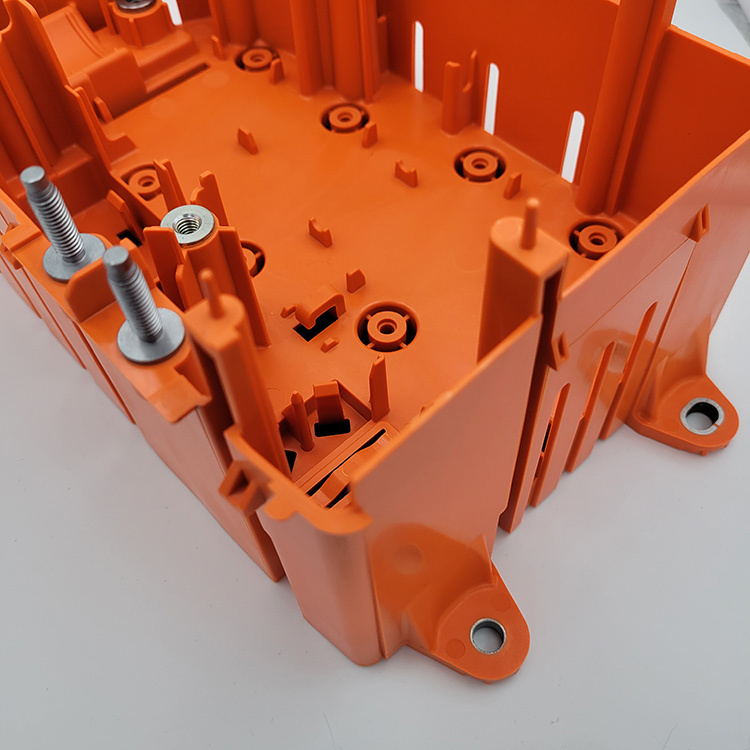
Plastic injection molding Production Process operation instructions
1. Pre-operation
a. Check the mold and the injection molding machine to make sure they are in good condition.
b. Check the injection molding machine settings to make sure they are correct.
c. Check the material to make sure it is suitable for the injection molding process.
d. Check the injection molding machine safety devices to make sure they are functioning properly.
2. Operation
a. Load the material into the hopper of the injection molding machine.
b. Close the safety guard and start the injection molding machine.
c. Adjust the injection pressure, injection speed, and other settings as needed.
d. Monitor the injection molding process and make adjustments as needed.
e. Remove the finished product from the injection molding machine.
3. Post-operation
a. Inspect the finished product for any defects.
b. Package the finished product for shipment.
c. Clean the injection molding machine and the mold.
d. Record the production data for future reference.
Plastic injection molding Production Equipment maintenance content?
1. Check the lubrication of the injection molding machine and the lubrication of the guide rail and screw.
2. Check the tightness of the screws and nuts of the injection molding machine.
3. Check the temperature of the injection molding machine and the temperature of the mold.
4. Check the cleanliness of the injection molding machine and the mold.
5. Check the wear of the injection molding machine and the mold.
6. Check the electrical system of the injection molding machine.
7. Check the safety protection device of the injection molding machine.
8. Check the operation of the injection molding machine.
9. Check the operation of the auxiliary equipment.
10. Check the operation of the molding system.
Plastic injection molding Industry research and development direction
1. Automation: Automation is becoming increasingly important in the plastic injection molding industry. Automation can help reduce costs, improve efficiency, and increase product quality. Automation can also help reduce labor costs and improve safety.
2. Advanced Materials: The plastic injection molding industry is constantly looking for new and improved materials that can be used in the production process. Advanced materials such as carbon fiber, nanomaterials, and bioplastics are being explored for use in the industry.
3. 3D Printing: 3D printing is becoming increasingly popular in the plastic injection molding industry. 3D printing can help reduce costs, improve efficiency, and increase product quality.
4. Process Optimization: Process optimization is becoming increasingly important in the plastic injection molding industry. Process optimization can help reduce costs, improve efficiency, and increase product quality.
5. Energy Efficiency: Energy efficiency is becoming increasingly important in the plastic injection molding industry. Energy efficiency can help reduce costs, improve efficiency, and increase product quality.
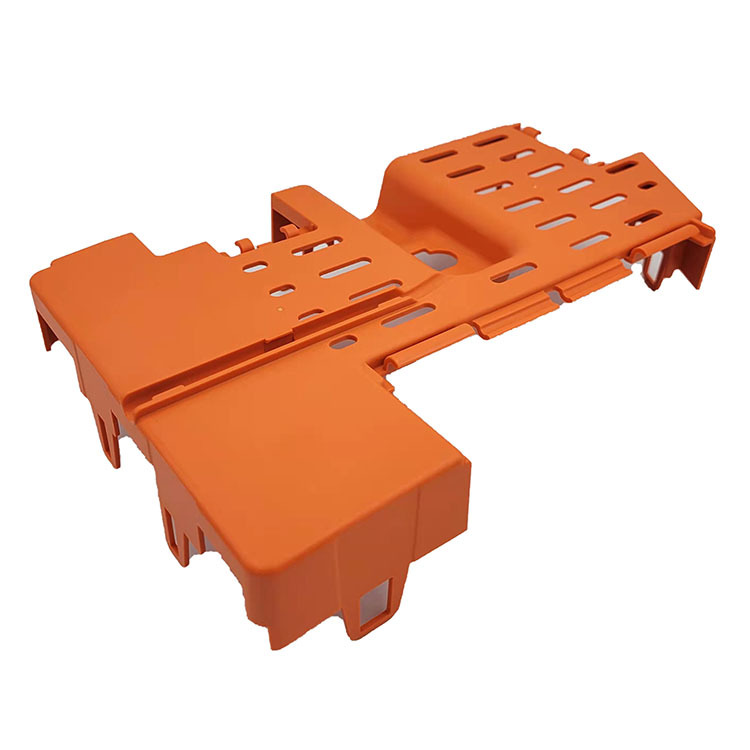
Plastic injection molding Customer groups and service levels
Customer groups:
1. Automotive manufacturers
2. Electronics manufacturers
3. Medical device manufacturers
4. Consumer product manufacturers
Service levels:
1. Design and engineering services
2. Mold fabrication and tooling services
3. Injection molding services
4. Post-molding services such as assembly, packaging, and shipping
Plastic injection molding Aftermarket Inclusions
Aftermarket inclusions for plastic injection molding can include a variety of services and products. These can include mold design and engineering, mold flow analysis, mold sampling, mold maintenance, mold repair, mold cleaning, mold storage, mold testing, and mold certification. Additionally, aftermarket inclusions can include services such as molding process optimization, molding process validation, molding process troubleshooting, and molding process improvement. Other services can include molding process monitoring, molding process control, and molding process automation. Finally, aftermarket inclusions can include products such as molding materials, molding tools, and molding components.
Plastic injection molding Product Quality Control
Product Quality Control for plastic injection molding should include a number of steps. First, the raw materials used in the process should be inspected for quality and consistency. The injection molding machine should be regularly inspected and maintained to ensure that it is operating correctly. The injection molding process should be monitored closely to ensure that the parts produced are of the desired quality and dimensions. Finally, the finished parts should be inspected for any defects or inconsistencies.
Plastic injection molding Owning a patent is more worthy of cooperation
If you own a patent, it is more worthy of cooperation. This is because a patent is a form of intellectual property that gives the owner exclusive rights to make, use, and sell an invention. This means that if you own a patent, you can control who can use your invention and how it is used. This can be a great advantage when it comes to negotiating a business deal. It can also help you protect your invention from being copied or used without your permission.

The international production model commonly used by plastic injection molding manufacturers
The international production model commonly used by plastic injection molding manufacturers is the lean manufacturing model. This model focuses on reducing waste and increasing efficiency in the production process. It involves streamlining processes, eliminating unnecessary steps, and using automation to reduce labor costs. The goal is to produce high-quality products in the most efficient and cost-effective manner possible. This model is used by many plastic injection molding manufacturers around the world.
What is the plastic injection molding design?
Plastic injection molding is a manufacturing process for producing parts by injecting molten plastic material into a mold. Injection molding can be performed with a host of materials, including metals, glasses, elastomers, confections, and most commonly thermoplastic and thermosetting polymers. The design of the injection molding process is a critical factor in the quality and cost of the final product. The design process involves creating a 3D model of the part to be molded, designing the mold itself, and then optimizing the process parameters to ensure the part is produced with the desired quality and cost.
Plastic injection molding Design, comparison of advantages and disadvantages of Chinese design level and USA design level
Chinese Design Level
Advantages:
1. Cost-effective: Chinese design level is much more cost-effective than the USA design level. This is because Chinese designers are able to produce high-quality designs at a much lower cost than their American counterparts.
2. Quick turnaround: Chinese designers are able to produce designs quickly, which can be beneficial for companies that need to get their products to market quickly.
3. Access to a larger talent pool: Chinese designers have access to a larger talent pool than American designers, which can be beneficial for companies that need to find the right designer for their project.
Disadvantages:
1. Language barrier: Chinese designers may not be able to communicate effectively with their American counterparts due to language barriers.
2. Cultural differences: Chinese designers may not be familiar with American culture, which can lead to misunderstandings and miscommunication.
3. Quality control: Chinese designers may not have the same level of quality control as American designers, which can lead to inferior products.
USA Design Level
Advantages:
1. Quality: USA design level is known for its high-quality designs. American designers are able to produce designs that are both aesthetically pleasing and highly functional.
2. Cultural understanding: American designers are familiar with American culture, which can be beneficial for companies that need to communicate effectively with their customers.
3. Access to resources: American designers have access to a wide range of resources, such as software and hardware, which can be beneficial for companies that need to produce high-quality designs.
Disadvantages:
1. Cost: USA design level is much more expensive than Chinese design level. This is because American designers are able to charge higher rates for their services.
2. Time: American designers may take longer to produce designs than Chinese designers, which can be a disadvantage for companies that need to get their products to market quickly.
3. Limited talent pool: American designers may have a limited talent pool, which can be a disadvantage for companies that need to find the right designer for their project.
Plastic injection molding Design, what are the deficiencies of Chinese companies
1. Lack of innovation: Chinese companies often lack the ability to innovate and develop new products.
2. Poor quality control: Chinese companies often lack the necessary quality control measures to ensure that their products meet international standards.
3. Limited resources: Chinese companies often lack the resources to invest in the latest technology and equipment.
4. Limited access to markets: Chinese companies often lack access to international markets due to language and cultural barriers.
5. Poor customer service: Chinese companies often lack the customer service skills necessary to provide a satisfactory experience to customers.
Plastic injection molding design renderings
Plastic injection molding design renderings are 3D images that show the design of a plastic injection molding part. They are typically created using CAD software and can be used to visualize the part before it is manufactured. The renderings can show the part from multiple angles, as well as the details of the molding process, such as the gate locations, runner systems, and cooling channels.
Classification of plastic injection molding Design Styles
Top 10 International Brands of plastic injection molding
1. Husky Injection Molding Systems
2. Elite Mold
3. Arburg
4. KraussMaffei
5. Sumitomo Demag
6. Nissei Plastic Industrial
7. Toshiba Machine
8. Toyo Machinery & Metal
9. JSW Plastics Machinery
10. Mitsubishi Heavy Industries Plastic Technology
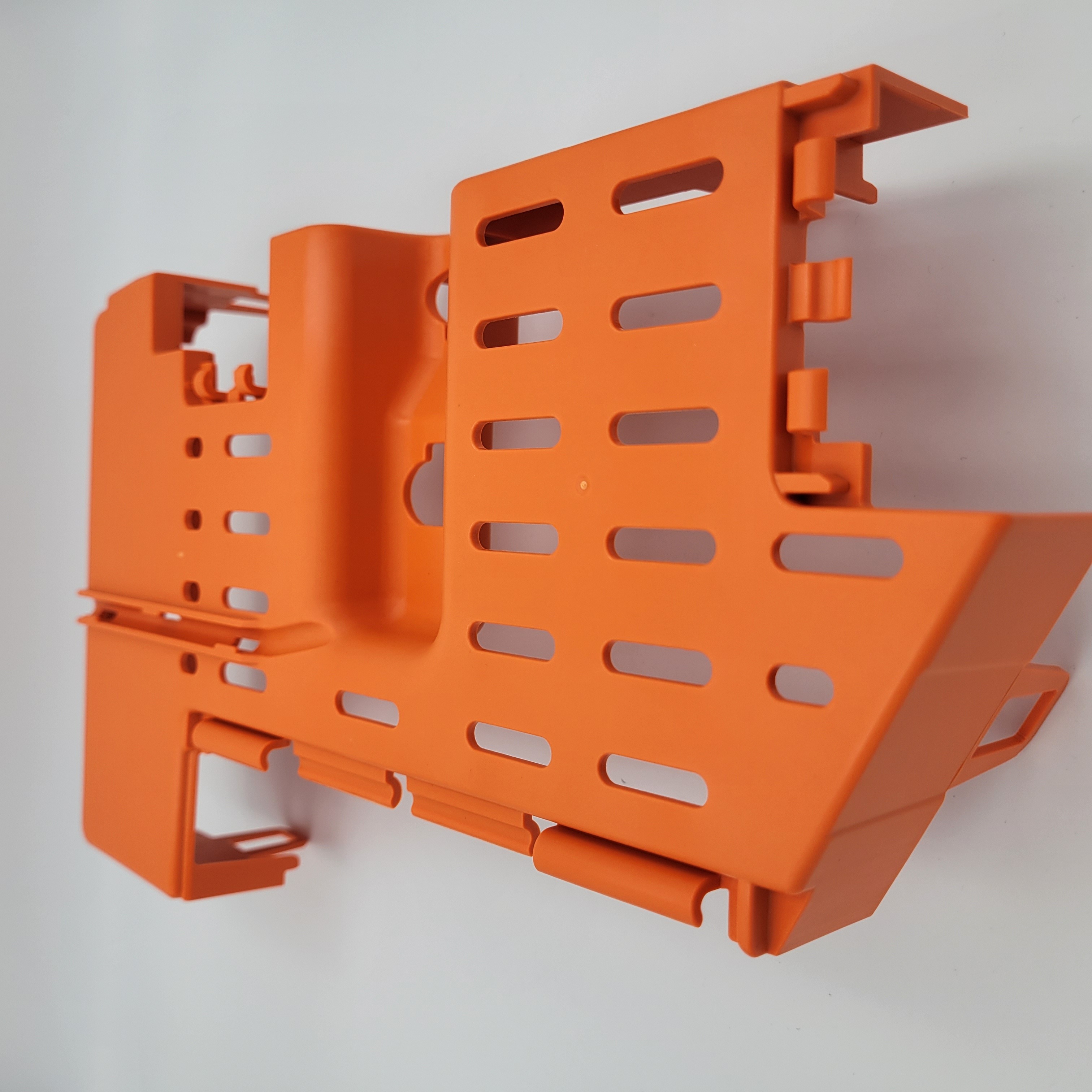
Analysis of the Competitive Situation of China's plastic injection molding Market
China's plastic injection molding market is a highly competitive market. The market is dominated by a few large players, such as Shenzhen Yizumi Precision Machinery Co., Ltd., Guangdong Yizumi Precision Machinery Co., Ltd., and Ningbo Haitian Precision Machinery Co., Ltd. These companies have established a strong presence in the market and have a wide range of products and services.
In addition to the large players, there are also a number of smaller players in the market. These smaller players are typically focused on specific niches and have a more limited product range. They are also more likely to be focused on providing customized solutions to their customers.
The competitive landscape of the market is constantly changing. New players are entering the market, while existing players are expanding their product range and services. This is creating a dynamic and competitive environment.
The competitive environment is also being driven by technological advancements. New technologies are being developed that are making plastic injection molding more efficient and cost-effective. This is allowing companies to produce higher quality products at lower costs.
In order to remain competitive, companies must continually innovate and develop new products and services. They must also be able to respond quickly to changing customer needs and demands. Companies must also be able to differentiate themselves from their competitors in order to gain a competitive advantage.
Overall, the competitive situation of China's plastic injection molding market is highly competitive. Companies must continually innovate and develop new products and services in order to remain competitive. They must also be able to differentiate themselves from their competitors in order to gain a competitive advantage.
Our Certificates
By co-operating with Elite Mold, you have selected one of the most reliable ISO 9001 certified plastic mold manufacturer, Elite Mold as a plastic injection mold manufacturer specializing in plastic injection mold and supplying plastic injection molding services for plastic mold design, prototype makings, mold flow analysis, precise machining, OEM services, ODM services and so on, building custom plastic injection molding. We are committed to enhance the Process optimized and quality of service, shorten lead time and assist in lowering inventory, by providing new products every year to bring in continuous and higher profits for our clients. The ability to produce mold at the International standard, strong engineering and mold design capability, aggressive delivery, competitive pricing and business integrity continues to be the success factor of Elite Mold.






